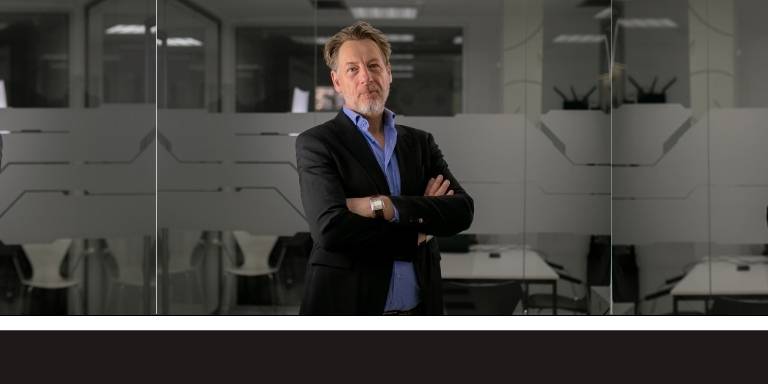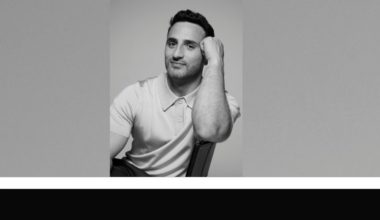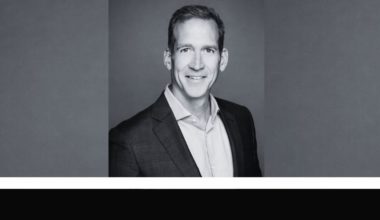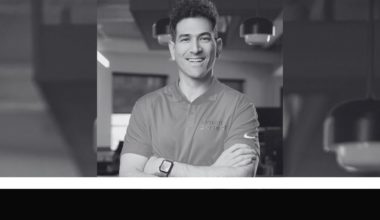As co-founder and CMO of editorial analytics company Smartocto, Rutger Verhoeven helps newsrooms around the globe to optimize their stories – with data. His goal was to build an actionable analytics solution, designed to be the tool he himself wished he had when he worked in the journalism industry.
He sought to create a solution to the issue he noticed in the workplace: journalists would simply publish a story and move on to the next one. However, there is so much to be gained by optimizing after publication – improved visibility, reach, engagement – all of which is increasingly important to an already struggling industry that’s now also been hit hard by COVID-19. Data turned out to be the key. By tracking performance in real-time, and delivering comprehensive reports for evaluation, smartocto helps publishers to optimize and make every story count.
Smartocto in its current form has been around since May 2020, after the merger of SmartOcto and Content Insights. This merger was realized at the request of one of their mutual clients, who saw that combined, their strengths could be even more beneficial to the industry. The fact that the companies obliged is telling of the fact that their mission is, and always has been, to continue to develop and become the best possible partner for their end-users.
In addition to his role as CMO, Rutger is also instrumental in advising the company’s clients to use smartocto and its philosophy, the Story Life Cycle, in the best possible way.
What is smartocto all about?
Smartocto is all about editorial analytics and content intelligence. We want to help storytellers create the best possible content, catered to their target audience and business goals. We do this by providing advanced metrics and analytics but presented in the most actionable, attractive, and comprehensible way possible. After all, writers are not data people, but they can greatly benefit from using data, so our goal is to make it as accessible as possible.
Tell us a little bit about your background and how you started your company?
It all started when I was Head of digital and innovation within BNN VARA – a large national public broadcasting company with many strong media (TV, radio, online) brands. I created multiple ‘digital brand strategies’ for all these programs on a so-called need-driven-model. My co-founder Erik van Heeswijk was working in a similar position at a similar company and faced the same challenges. It was my broken leg that eventually brought us together as we started carpooling. We discussed how we saw our editors making the same mistakes: they would publish a story and move on to the next one right away. But we were convinced that if only they took the time to watch the performance of a story and try to optimize it, by involving other channels or changing the headline and images, for example, audience engagement could be greatly improved. The only problem was, how do you keep track of the performance of all your stories on every channel? All the data solutions available didn’t quite give us the insights we needed. That’s when we decided to fire ourselves and start building that ultimate editorial analytics tool.
What was the biggest problem you encountered with your business, and how did you overcome it?
We were convinced that we had identified an issue that was prevalent throughout the industry and that soon, people would start clamoring for our solution. Turns out though, our target audience was not impressed. And how could we blame them? I knew that soon, having no insights into audience behavior, or story performance would become a real issue regarding the monetization of online publishing. But it had been my job to innovate and think ahead. The industry itself wasn’t ready to admit to this yet, and they certainly weren’t going to invest in a solution. Simply put, our timing didn’t match the demands from the market. What we envisioned, and the challenge that we wanted to help overcome, was maybe two years ahead of editorial reality.
Fortunately, we were able to find innovative organizations and early adopters that believed in what we were trying to achieve. We created various labs and pilots where we worked together with these organizations on multiple use cases in order to better understand their challenges. That gave us the input we needed to create something that satisfied their actual needs. Most of our features were born from these labs, in co-creation with our clients. We were even lucky enough to have them co-finance the new things we added to the existing MVP.
What were the top mistakes you made starting your business and what did you learn from it?
My top mistake was being satisfied with the first angel investment funding, thinking “This is great, now we can start building our tool and then sell it right away.” As it turned out, that entire first round of funding wasn’t nearly enough to cover the costs of building that killer app that we envisioned. We burned through our investment money creating a first prototype that we couldn’t even bring to the market, due to issues with scaling and performance. We had no idea how expensive developers, external advisers, and design companies could be.
What this simple first version did give us was the proof that our idea worked, we just needed to build it again – and this time, more scalable and flexible. In hindsight, we should have thought about that more upfront. But we’ll never make that same mistake again. Everything we build from now on will always have that promise of scalability and flexibility. It taught us to think ahead and include clients and end-users in the process. And sure enough, we were able to build a next version based on actual, real-time data. In other words, we learned to develop with the end-user in mind and make sure our product would perform in reality.
What is one thing that you do daily to grow as an entrepreneur?
I’m always looking to improve. Whether it’s myself, the brand, or the people I work with. How can I motivate my team? What do our clients tell us that we can use to improve the product? Should the brand be positioned in another way?
I always seek inspiration, whether it’s by reading relevant books, meeting inspiring people, or attending webinars and masterclasses. Being an entrepreneur basically means that you never get to relax, but I wouldn’t have it any other way.
What are three books or courses you recommend for new entrepreneurs?
- Kristina Halvorson & Melissa Rach, Content Strategy for the Web
- David Rowan, Non-Bullsh*t Innovation: Radical Ideas from the World’s Smartest Minds
- Jim Collins, Good to Great: Why Some Companies Make the Leap and Others Don’t
What has been your most effective marketing strategy to grow your business?
Collaboration. As a new player in a field where most companies are unaware of the issue that you’re trying to solve, it helps to have authority on your side. For example, when we first decided to enhance our editorial tools with the user needs theory, developed by the BBC, we knew that we had to connect with Dmitry Shishkin. Our goal was to create notifications and predictions, based on the user needs theory, that could support newsrooms in their commissioning and improving their journalistic output. And Shishkin was not only involved in the development and adoption of the model at the BBC World Service from the beginning, but he’s also a digital transformation and content strategy specialist.
Collaborating with Dmitry Shishkin has proved to be a great success. Throughout the entire project, we have been able to benefit from his experience and he has been a great consultant. But – maybe even more importantly – having him on board also allowed us to get some well-needed exposure for our brand with many people that we wouldn’t have been able to reach otherwise.
What’s your best piece of advice for aspiring and new entrepreneurs?
Don’t do it… if you’re happy now – cherish that. It’s stressful, scary at times and your family life will likely take a hit. Still, want to give it a go? Make sure you have a partner with a steady income.
In all seriousness though, it really depends on where you are in life. If you just got out of college and don’t have a family to take care of, you still have that fresh optimism and energy and can afford to live modestly for a while as you build your company. It’s different when you’re older. On the one hand, we had a lot of experience and the added benefit of a large network and people that could help us get ahead. But at the same time, we also had families to provide for and take care of and that wanted to spend time with us.
But no matter where you are: a network is one of the most valuable things to have as an entrepreneur. Invest in building a network that can get you in touch with the right people. And: be sure to especially listen to the people who don’t agree with you. It’s interesting to get a different perspective: why would this not work? It’s smart to cultivate your non-fans and think of ways to convince them otherwise. This will help with your branding and marketing later on.
What is your favorite quote?
Maybe stories are just data with a soul.
– Brené Brown
How is running a tech company different than what you thought it would be?
I always say we’re not a data- or tech company, we’re an impact company. We deliver a smart layer of intelligence that will help news, media & content organizations to become better in their storytelling – based on data insights.
That said, of course, we do deliver tech. And the issue with the tech part of it is that it’s really tough and complex. In order for it to be accepted by our clients – people that work with words, not with numbers – we have to make a super simple and easy-to-understand translation of those data insights. Otherwise, people simply will not understand what is expected of them. What I never expected was that it would be so complex and challenging to make it look simple.
I always compare smartocto to navigation software, calling it the ‘Waze of the content industry’. Because that’s what we’re trying to do: give people real-time directions for story optimization, based on multiple data collections and calculations. But the fact that you can create and design something, is no guarantee that people will use it. I also learned that technology is very expensive to develop. And really, there is no guarantee that you will ever earn that money back.
How do you think people’s opinions of data will change in the future?
This is something I (have to) think about a lot because the development of our product should anticipate it. Right now we create dashboards and reports, but those may soon become a commodity and then we’ll have to offer something more advanced. The merger of our company allowed us to think ahead and start experimenting with machine learning and AI, which we think will become more and more accepted.
Today’s content maker is faced with a real challenge. Every brand has a story to tell. With it, they need to reach and impress an audience and provide value in whichever way possible. This is becoming more and more difficult. The environment is changing, the amount of content is growing and audiences are becoming less loyal. Content producers need data to estimate how they can get the most profit from the effort they put into their stories. A regular dashboard shows that data, but it doesn’t tell you what to do with it. That’s where smartocto comes in: it’s an interpreter for that data, considering your wishes and calculating the best strategy.
When you look at the development of analytics, Google Analytics was at the beginning of it and we want to be at the end. Instead of just visualizing data, we want to deliver intelligence that processes the numbers and translates them into tips that you can act on. That way, we want to smartify your system. Just like Intel Inside can make your computer faster, smartocto Inside will make the editorial room smart. We will be that layer of intelligence on all possible systems and functionalities, the ‘data-science-in-a-box’ construction that calculates smart tips for every data collection you have: a turbo injection for your data systems. Who knows, this could eventually transform into a pay-per-use format, where the costs are directly related to how valuable the tip was. Is that too innovative? Maybe. And it could take the industry a while to accept it and trust it. But entrepreneurship is subjected to the horseless carriage syndrome: everything is based on what came before unless it’s truly innovative. And that true innovation is what we’re striving to achieve.
How can readers get in touch with you?
If you’d like to know more about smartocto, what we do or what it’s like to run a multinational startup, feel free to contact me via rutger@smartocto.com. We have an active LinkedIn page where we share data studies, insights, and storytelling tips, as well as our latest blogs, podcasts, and live events. Also, feel free to sign up for our newsletter to stay in the loop.
Tech Founder Interview: Rany Burstein – Founder and CEO of Roommate Finder, Diggz








